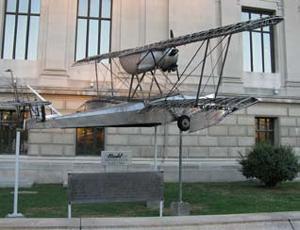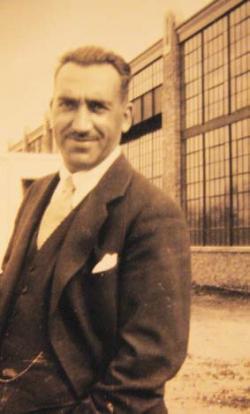
From the mythical Greeks, Icarus and Daedalus, to Italian inventor Leonardo da Vinci, man has been fascinated with the idea of flying. Enea Bossi, through various experiments, was responsible for the world’s first stainless steel airplane.
Born March 29, 1888, in Milan, Bossi studied physics and mathematics at the Instituto Technico from which he graduated in 1907, in Lodi, Italy. Bossi’s fascination and inspiration with aviation originated with the success of another set of flyboys, the Wright Brothers. The Wright Brothers success with their plane, the Flyer, in 1903, motivated the aspiring aviator to dedicate his life to the skies.
With financial assistance from his father, Bossi built his first plane. He even taught himself and his future business partner, Giuseppe M. Bellanca, to fly. With a third partner, Paolo Invernizzi, the trio pooled their resources to create the first Italian-designed and built aircraft in 1909. Their design earned them a medal in 1910 at the first international aviation meeting in Reims, France.
Bossi, not only vital to man flying, but also integral in the success of landing, used his skills for the Italian Navy during the dawn of World War I. He developed the military’s first seaplane and landing gear braking system, while finally making his way to the sky as a fighter pilot and instructor.
With Italy in disarray after the war, Bossi left for New York in 1914. Bossi applied for American citizenship months after arriving and in 1926, he received his naturalization papers. His immigration to the U.S. led to a meeting with Flora Kehrer, an émigré who was staying with relatives to escape the war. The couple married and settled in Montclair, N.J.
 Bossi continued his work with aviation engineering throughout the 1920s. He invented and patented various types of apparatus for fuel systems, landing gears, and aircrafts. Bossi’s entrepreneurial spirit led to the establishment of the American Aeronautical Corporation (AAC) in Port Washington, N.Y., in 1928. Bossi’s spirit and commitment to the field of aviation led to the AAC building and manufacturing of the Savoia-Marchetti seaplanes. These were one of the few foreign-designed and affordable planes manufactured in the U.S.
Bossi continued his work with aviation engineering throughout the 1920s. He invented and patented various types of apparatus for fuel systems, landing gears, and aircrafts. Bossi’s entrepreneurial spirit led to the establishment of the American Aeronautical Corporation (AAC) in Port Washington, N.Y., in 1928. Bossi’s spirit and commitment to the field of aviation led to the AAC building and manufacturing of the Savoia-Marchetti seaplanes. These were one of the few foreign-designed and affordable planes manufactured in the U.S.
The company built and distributed 36 S-56’s, and the New York City Police Department used the model to enforce flying regulations during Prohibition. The company continued to improve upon their first product with the S-56B, but during the Depression, sales plummeted and production ceased.
In 1930, Bossi joined Edward G. Budd Manufacturing Corporation, as head of the stainless steel research section, helped design, and construct the Budd BB-1 Pioneer, the railroad manufacturer’s first airplane. Bossi, later known as the father of the first stainless steel plane, the BB-1, though never mass-produced, was the first of its kind. In 1931, Bossi sold the AAC and became the Budd Company’s spokesperson in Europe.
One of the biggest highlights of Bossi’s career came in 1936 when he and partner, Vittorio Bonomi, invented the pedaliante (Italian for “pedal glider”). Bossi, convinced that he could build a device powered by human energy and gravity, began working with Bonomi to create the design that would allow man to fly.
After learning of the Italian government's competition to pay $5,000 for a human powered aircraft that flew successfully for one kilometer, Bossi designed the aircraft, Bonomi built it, and Italian military officer Emilio Casco test piloted it. Bonomi flew five-eighths of a mile in a glider with pedals geared to two propellers.
After several weeks of trials, Casco piloted the plane with no assistance, through the air, but he failed to reach the required one-kilometer. The duo regrouped and incorporated a catapult system that would launch Casco into the air as he pedaled. The maneuver worked and the pedaliante flew the one-kilometer necessary to compete. However, their method of launch disqualified them from the competition. This disappointment, although significant, did not deter Bossi. In fact, it further motivated him to continue creating methods of flight. Despite it all, Bossi’s many inventions solidified his reputation and name as a pioneering aviator and engineer across the world.
